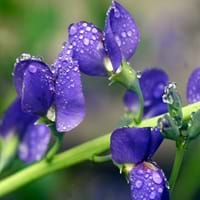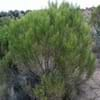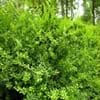Life Span
Perennial
Perennial
Origin
North America, United States, North-Central United States, Central United States, Canada
Australia
Types
Blue False Indigo
White False Indigo
Not Available
Number of Varieties
Not Available
Habitat
gardens, Grassland, Warmer regions
Scrubs, tussock grasslands, Upland savannas
USDA Hardiness Zone
2-8
10-11
Sunset Zone
A1, A2, A3, 1a, 1b, 2a, 2b, 3a, 3b, 4, 5, 6, 7, 8, 9
8, 9, 12, 13, 14, 15, 16, 17, 18, 19, 20, 21, 22, 23, 24
Habit
Oval or Rounded
Upright/Erect
Flower Color
Purple
Lemon yellow
Flower Color Modifier
Not Available
Bicolor
Fruit Color
Light Green
Gray Green
Leaf Color in Spring
Light Green, Gray Green, Gray
Blue Green
Leaf Color in Summer
Light Green, Gray Green, Gray
Blue Green
Leaf Color in Fall
Light Green, Gray Green, Gray
Blue Green
Leaf Color in Winter
Not Available
Blue Green
Leaf Shape
Ovate
Long Narrow
Plant Season
Summer, Fall
Spring
Sunlight
Full Sun, Partial Sun, Partial shade
Full Sun
Type of Soil
Loam, Sand
Loam, Sand
The pH of Soil
Neutral, Alkaline
Acidic, Neutral, Alkaline
Soil Drainage
Well drained
Well drained
Bloom Time
Summer, Late Summer, Early Fall
Spring, Late Winter
Tolerances
Drought
Drought
Where to Plant?
Ground, Pot
Ground
How to Plant?
Seedlings, Stem Planting
Seedlings
Plant Maintenance
Medium
Medium
Watering Requirements
Average Water Needs
Do not water excessively
In Summer
Lots of watering
Lots of watering
In Spring
Moderate
Moderate
In Winter
Average Water
Average Water
Soil pH
Neutral, Alkaline
Acidic, Neutral, Alkaline
Soil Type
Loam, Sand
Loam, Sand
Soil Drainage Capacity
Well drained
Well drained
Sun Exposure
Full Sun, Partial Sun, Partial shade
Full Sun
Pruning
Remove damaged leaves, Remove dead branches, Remove dead leaves
Remove dead or diseased plant parts, Requires little pruning
Fertilizers
All-Purpose Liquid Fertilizer
All-Purpose Liquid Fertilizer, No fertilizers needed
Pests and Diseases
Red blotch
Insects, Root rot
Plant Tolerance
Drought
Drought
Flower Petal Number
Single
Single
Fragrant Bark/Stem
Yes
No
Foliage Texture
Fine
Fine
Foliage Sheen
Matte
Matte
Self-Sowing
Not Available
Yes
Attracts
Not Available
Butterflies
Allergy
Not Available
Asthma, Eye irritation, Headache, Nose Irritation, Throat itching, Vomiting
Aesthetic Uses
Showy Purposes
Showy Purposes
Beauty Benefits
Not Available
Not Available
Environmental Uses
Air purification
Air purification, soil stabilisation
Medicinal Uses
Not Available
Not Available
Part of Plant Used
Whole plant
Flowers, Sap, Seeds
Other Uses
Used as Ornamental plant
Used as a dye, Wood is used fore making tools
Used As Indoor Plant
No
No
Used As Outdoor Plant
Yes
Yes
Garden Design
Foundation, Mixed Border, Rock Garden, Wall
Shade Trees, Street Trees
Botanical Name
AMORPHA canescens
ACACIA aneura
Common Name
False Indigo
Mulga, True Mulga
In German
falsches Indigo
Mulga
In French
faux Indigo
Mulga
In Spanish
Falso Indigo
Mulga
In Greek
Λάθος Indigo
mulga
In Portuguese
false Indigo
Mulga
In Polish
fałsz Indigo
Mulga
In Latin
falsum indicum
Mulga
Phylum
Magnoliophyta
Magnoliophyta
Class
Not Available
Magnoliopsida
Clade
Angiosperms, Eudicots, Rosids
Angiosperms, Eudicots, Rosids
Tribe
Not Available
Not Available
Subfamily
Not Available
Not Available
Number of Species
Not Available
Not Available
Season and Care of False Indigo and Mulga Tree
Season and care of False Indigo and Mulga Tree is important to know. While considering everything about False Indigo and Mulga Tree Care, growing season is an essential factor. False Indigo season is Summer and Fall and Mulga Tree season is Summer and Fall. The type of soil for False Indigo is Loam, Sand and for Mulga Tree is Loam, Sand while the PH of soil for False Indigo is Neutral, Alkaline and for Mulga Tree is Acidic, Neutral, Alkaline.
False Indigo and Mulga Tree Physical Information
False Indigo and Mulga Tree physical information is very important for comparison. False Indigo height is 60.00 cm and width 120.00 cm whereas Mulga Tree height is 550.00 cm and width 370.00 cm. The color specification of False Indigo and Mulga Tree are as follows:
False Indigo flower color: Purple
False Indigo leaf color: Light Green, Gray Green and Gray
Mulga Tree flower color: Lemon yellow
- Mulga Tree leaf color: Blue Green
Care of False Indigo and Mulga Tree
Care of False Indigo and Mulga Tree include pruning, fertilizers, watering etc. False Indigo pruning is done Remove damaged leaves, Remove dead branches and Remove dead leaves and Mulga Tree pruning is done Remove dead or diseased plant parts and Requires little pruning. In summer False Indigo needs Lots of watering and in winter, it needs Average Water. Whereas, in summer Mulga Tree needs Lots of watering and in winter, it needs Average Water.





